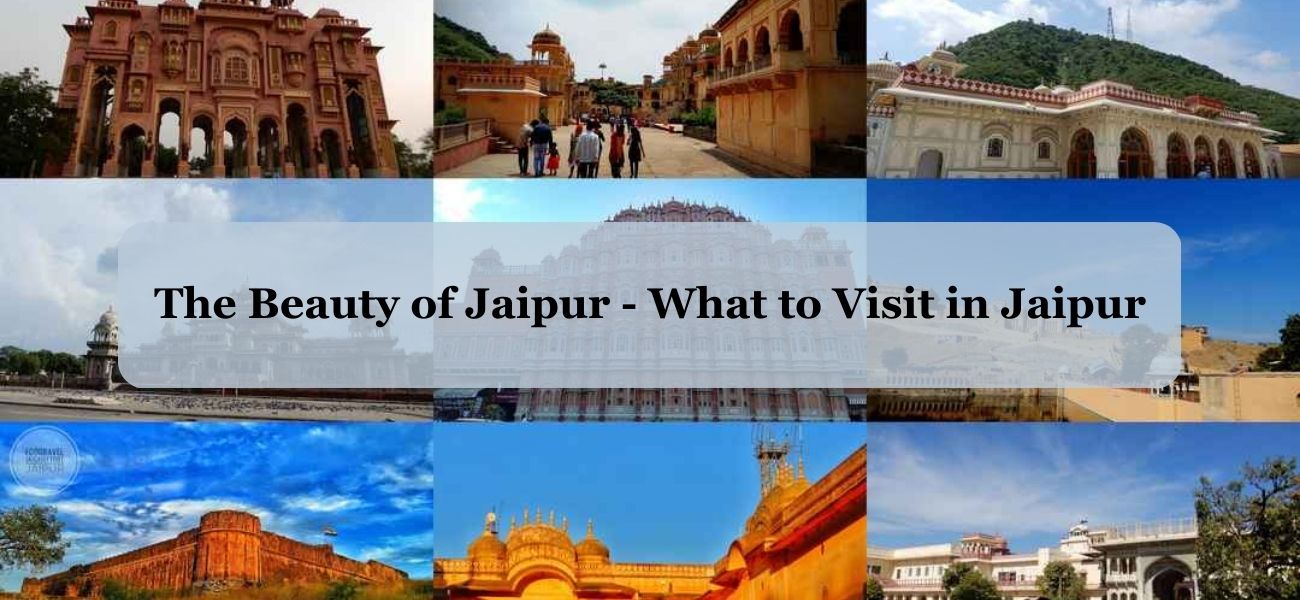The Beauty of Jaipur – What to Visit in Jaipur

What to Visit in Jaipur?
Amber Fort: Day Trip from Jaipur

Amber Fort is a real fortress nestled on the hillside 11 km from Jaipur, in the state of Rajasthan. This fortress which overlooks Jaipur from the top of a hill is the most important tourist attraction. The city of Amber was originally built by Meenas and was later fortified by Raja Man Singh I. You can savor the unique moments of ecstasy riding an elephant as you make your way to Amber Fort.
The Amber Fort is renowned for its specific elements of Hindu art. Thanks to its huge walls and a whole series of gates and paved ways, the fort dominates the central lake of Maota, which is the source of water supply for the site. Amber Fort, also known as Amber Palace, housed members of the royal family of Rajput Maharajas for centuries.
The fort, along with two other fortifications, stands on the CheelkaTeela (Hill of the Eagles) which belongs to the Aravalli range. The forts of Amber, Jaigarh (in the north) and Nahargarh (in the south) are considered as a single whole, as they are connected by an extensive network of walls and fortified works. In case of danger, an underground passage was provided to allow members of the royal family to pass from Amber Fort to Jaigarh Fort, which is much more fortified and even contains a cannon foundry.
City Palace

It is a complex formed by Chandra Mahal Palace and Mubarak Mahal Palace, which is located in Jaipur, the capital of Rajasthan, India. It was Jai Singh II who was the instigator of the first works between 1729 and 1732. City Palace was continuously improved until the 20th century. Located in the northeast of the city, this complex exhibits sumptuous, quintessential and luxurious decorations. It consists of a myriad of courtyards, gardens and audience halls.
The credit for the beauty of the complex goes mainly to Vidyadar Bhattacharya, chief architect of the royal court, and Samuel Swinton Jacob. This palace is the residence of the Maharaja of Jaipur, head of the Rajputs Kachwaha clan. One sector of the Chandra Mahal Palace is given over to a museum, while the rest, which is in fact most of it, is a royal dwelling.
Hawa Mahal

Built in 1799, the impressive Palace of the Winds in Jaipur features more than 953 balconies or jharokha spread over a five-storey facade of red and pink sandstone lined with white. Located in the heart of the city of Jaipur, it was built in such a way that the wind could penetrate it and bring coolness during the scorching summers, which is how the palace got its name, Hawa meaning wind.
But that wasn’t the only reason. In medieval India, ‘pardah’ was practiced, which consisted in isolating women so that they would not be seen by men. Thus, to allow the royal woman to be connected to the outside, the Hawa Mahal was built. Queens and princesses could watch the various street processions and festivities through the many windows of the Hawa Mahal without being scrutinized by men.
Jahal Mahal

Jal Mahal is a marvelous palace that gives the illusion of floating on water. In the Indian language Hindi, Jal means water and Mahal, a palace. The Jal Mahal is a very beautiful palace built in the Indo-Muslim style in the middle of Man Sagar Lake. It was built by Maharaja Madho Singh I to serve as a summer lodge for his duck hunters. The Mahal is a testimony to the link that was woven between the Rajputs and the Mughal Empire through this architecture.
The outstanding beauty and marvelous attractions in Jaipur have made the city a part of the most popular tourist circuit called the Golden Triangle, along with Delhi and Agra. Festivals and fairs are an integral part of life in beautiful Jaipur and one can soak up the culture and traditions throughout the year in this fascinating city. So what are you waiting for ?
